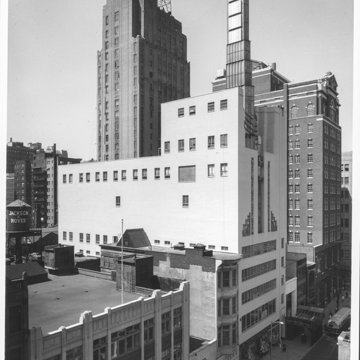You are here
Art Institute of Philadelphia (WCAU Studio)
In the 1920s, radio stations became the hot building of the second media age, supplanting the newspaper office of the first media age. Here Sternfeld clad the facade with a material that the newspapers described as “blue movie glass”—apparently crushed blue glass in a stucco base that sparkled with changing light; it has since been painted blue. Sternfeld bisected the facade with a great lighted tower (now much shortened) that flickered as if emanating radio waves, while brushed aluminum and bronze ornaments in an Aztec vein flared to either side; the lower-level ornament was added in the 1983 renovation. Two other radio stations can be found in the neighborhood, marking the westward march of media to the new center of the city around Rittenhouse Square. At 1619 Walnut Street
Writing Credits
If SAH Archipedia has been useful to you, please consider supporting it.
SAH Archipedia tells the story of the United States through its buildings, landscapes, and cities. This freely available resource empowers the public with authoritative knowledge that deepens their understanding and appreciation of the built environment. But the Society of Architectural Historians, which created SAH Archipedia with University of Virginia Press, needs your support to maintain the high-caliber research, writing, photography, cartography, editing, design, and programming that make SAH Archipedia a trusted online resource available to all who value the history of place, heritage tourism, and learning.















